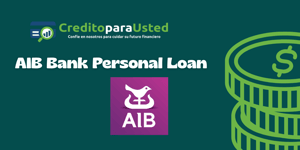Every borrower’s journey through repayment can feel overwhelming, but with the right approach, it becomes a path toward lasting financial well-being and freedom. This guide unpacks proven strategies, emerging policies, and practical tools to help you conquer debt and build confidence as you move forward.
By understanding your options and applying disciplined habits, you can transform a heavy obligation into an achievable goal.
Understanding Different Loan Types
Knowing the nuances of your loans is the first crucial step. Federal student loans, private loans, and employer-sponsored programs each carry unique terms, benefits, and challenges.
Federal student loans typically offer multiple repayment plans:
- Standard Plan: 120 fixed payments over 10 years, offering predictable payoff.
- Income-Driven Repayment (IDR): Payments based on income, up to 20–25 years, with potential forgiveness.
- Loan Consolidation: Extends repayment up to 30 years but may increase total interest.
Meanwhile, many employers now provide up to $5,250 annually in tax-free repayments as a benefit, helping you shrink your balance faster.
Federal agencies also offer direct loan repayment for employees in certain programs, sometimes covering thousands each year.
Key Strategies for Repayment Success
Repayment is about more than making the minimum payment. Combining smart tactics can dramatically reduce the time and interest paid.
First, make extra payments toward principal. Even small amounts above your monthly requirement chip away at interest and shorten your loan term.
Switching from monthly to biweekly payments effectively adds one extra payment each year without much strain.
Enrolling in auto-pay often earns a small rate reduction. That tiny discount, compounded over years, can save you hundreds.
Whenever possible, pay interest-only amounts before it capitalizes. Preventing unpaid interest from hiking your principal saves significant future repayment costs.
Choosing between the avalanche and snowball methods also impacts your momentum:
- Avalanche: Attack high-interest debt first to minimize long-term cost.
- Snowball: Tackle smaller balances first for quick wins and motivation.
Whichever you choose, consistency is key.
Loan consolidation can simplify payments, but compare rates carefully: a lower rate with a longer term might not always be the best deal.
If you’ve built a strong repayment history, don’t hesitate to negotiate better terms with lenders. Many will reduce rates for reliable borrowers.
The proposed 2025 policy adjusts these timelines, aiming to balance affordability with fiscal responsibility.
Mastering Budgeting & Financial Literacy
A clear, realistic budget is the foundation of any successful repayment plan. Allocating funds strategically ensures you never miss a payment or sacrifice essential needs.
Popular budgeting rules include the 50/20/30 method—50% needs, 20% debt/savings, 30% wants—and the 70/20/10 rule—70% expenses, 20% savings/debt, 10% investments or charity.
- Track spending daily using budgeting apps to stay on course.
- Set automatic transfers to debt accounts to enforce discipline.
Understanding interest calculations, grace periods, and capitalization can prevent costly surprises. Take time to understand all loan terms thoroughly, reviewing your promissory notes and contacting servicers with questions.
Practicing disciplined saving habits, such as building an emergency fund, protects you from relying on credit when unexpected expenses arise.
Leveraging Support & Forgiveness Programs
Numerous programs exist to lighten your load. Public Service Loan Forgiveness (PSLF), for instance, forgives remaining balances after ten years of qualifying payments in government or nonprofit roles.
Employer-sponsored repayment plans not only contribute funds but can integrate financial wellness workshops, equipping you with tools for broader stability.
Federal agencies may directly repay student loans for employees in critical fields, enhancing recruitment and retention while boosting your finances.
Stay informed about legislative changes. The 2025 budget reconciliation proposals could reshape IDR eligibility and introduce minimum payments as low as $10 per month, easing entry for borrowers with limited income.
Behavioral Approaches to Stay Motivated
Beyond numbers and policies, your mindset drives lasting success. Celebrating small victories—like paying off your first loan segment—reinforces positive habits.
Visual tools, such as payoff calendars or progress charts, turn abstract goals into tangible milestones.
Consider pairing up with a friend or joining an online community. Shared accountability fosters encouragement and creative solutions when challenges arise.
When setbacks occur, pause to reassess rather than abandon your plan. Adjust your budget, revisit strategies, and recommit to your path.
Looking Ahead with Confidence
Managing loan repayments effectively combines strategic planning, disciplined execution, and emotional resilience. By leveraging available tools, staying informed of policy updates, and nurturing a positive mindset, you can conquer debt and unlock opportunities for growth.
Each payment brings you one step closer to financial freedom. Embrace the journey, celebrate progress, and remember: consistent effort yields transformative results.
Your future self will thank you for the choices you make today.
References
- https://www.optavise.com/insights/all-blogs/employer-student-loan-repayment-a-strategic-guide-for-boosting-retention-in-2025
- https://www.nerdwallet.com/article/loans/student-loans/pay-off-student-loans-fast
- https://bipartisanpolicy.org/blog/2025-budget-reconciliation-and-student-loans/
- https://www.afcpe.org/event/fpa-connect-mastering-student-loan-repayment-in-2025-expert-strategies-for-financial-success/
- https://www.amerantbank.com/ofinterest/debt-management-strategies-for-financial-freedom-2025/
- https://www.opm.gov/policy-data-oversight/pay-leave/student-loan-repayment
- https://www.wgbh.org/news/2025-05-12/the-future-of-student-loan-repayment-explained
- https://www.investopedia.com/terms/f/financial-literacy.asp










